Baby Carrier Positions By Age (0-24 m): A Quick Guide
Whenever I used to carry my babies in wraps, slings, or soft structured carriers, I used to feel like they were hugging me. Keeping your little bundle of joy safe and close to your body, especially in the infant stage, feels like a victory, right? If you are a mom, you know what I am talking about!
Selecting the right carrier for your baby according to age and developmental milestones is a MUST-KNOW-THING, especially when you are a first-time parent. With so many babywearing options on the market, it’s easy to feel overwhelmed about what’s safe for your little bundle of joy, when to face baby forward, or how to support those tiny hips the right way.
TBH- I used to do so!
But, don’t worry, I have got your back! In this article, I have covered four major baby wearing positions by baby’s age – from newborns/infants to toddlers (0-24 months). These positions will ensure the baby’s healthy torso development, body support, and overall safety.
Let’s jump ahead to explore these positions in detail.
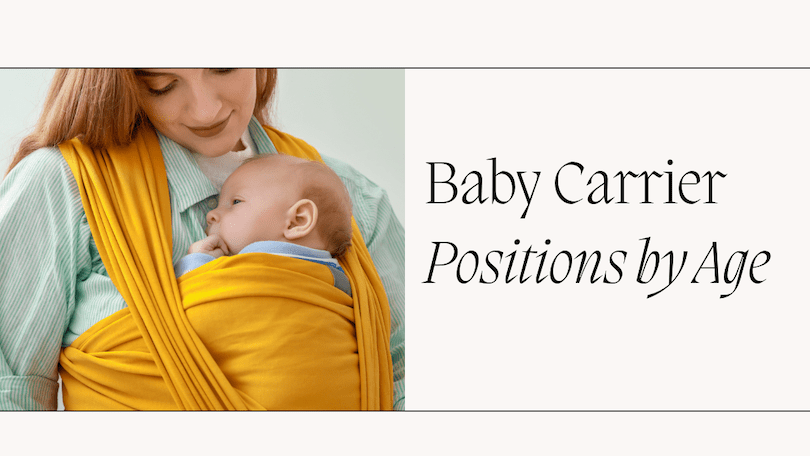
Table of Contents
4 Main Types Of Baby Carrier Positions
I became a mom for the first time in 2008. We had Avery. I was young (only 21 years old) and new to motherhood. It is the birth of a ‘MOM’ with her baby, right? My mom taught me about these babywearing carriers and positions.
In that phase, ‘Wraps and Slings’ became my BFFs! HAHA! Any mom can relate to this.
From carrying Avery in soft cotton wraps on my chest to taking her on hikes in backpack carriers, these baby wearing positions helped me explore and enjoy the initial years of motherhood.
Types of Babywearing Positions With The Age:
I know it feels overwhelming at first to carry your baby in such positions. But, TRUST ME- once you learn this, your baby will sit comfortably in the carrier without a FUSS!
Babywearing is like an extra helping hand that carries your baby safely when you are occupied with work.
Now, the question arises:
What type of carriers are suitable for these babywearing positions?
The answer is ALMOST ALL!
You can carry your baby in every position nowadays, whether it is wraps, ring slings, soft-structured, or hybrid carriers!
With my first baby girl, Avery, I kept stressing about getting the wrap perfect. But honestly, it doesn’t have to be Instagram-worthy—just snug, safe, and cozy enough to kiss that little forehead.
With an experience of raising 6 beautiful children, I suggest that – all you have to do is guess your baby’s cues and sit them in the right position to provide comfort.
Let’s discuss the top baby carrier positions by age that each parent should know:
- Front Inward Facing
- Front Outward Facing
- Back Carry
- Hip Carry
I have created a small chart that gives an overall idea of these positions for the baby’s age and development stages.
Baby Carrier Positions by Age: Quick Reference Guide
| Age | Developmental Milestone | Recommended Babywearing Position |
| 1–3 months (Newborns) | Unable to hold head and neck up, cannot sit, and needs spine support. | Front inward facing (you may have to use infant inserts if your baby is too small) |
| 3–6 months | When the baby turns the neck at a 45-degree angle; wiggles hands and toes for responses. | Front inward facing |
| 6 months | When the baby brings the head forward when pulled into a sitting position. | Front carry inward, Front Outward Facing (short periods only) |
| 6–12 Months | When the baby sits unassisted with strong upper body control. | Front carry inward, Front carry outward, Back Carry, Hip Carry |
| 1–2 Years (Toddler) | When the baby starts to grab and pull things around to stand up and walk. | Hip carry, Back carry |
1. Front Facing Inwards
Caregivers mostly prefer this carrying position, especially for the first 6 months.
Why so?
Because,
It allows face-to-face interaction with your baby.
Your little one gets full-body support to the neck, head, and spine, which is needed especially in the first 6 months.
Most importantly, this position helps the baby to adapt to life outside the womb for a smooth transition. Wraps and slings in front-inwards facing can help you the best in this!
In my case, I used to carry Fiona (my third born) in Meh Tai wraps. At that time, my second-born- Aiden was only 3 years old. Fiona used to snuggle for hours when put in wraps. In turn, it helped me to keep my hands free and help Aiden in his play and activities.
Also, keeping your baby closer to your skin helps nurture and regulate their emotions, happiness, breathing, and heart rate.
Let’s see its Pros and Cons:
- You can kiss your baby’s forehead anytime!
- Your baby can sleep cozily on your chest.
- It may block visual exploration for your baby, which is most needed for babies above 3 months old.
- It can add strain on the caregiver’s arms and back.
Did you know? Keeping your baby closer to the skin releases Oxytocin, the stress-bursting love hormone in the body. This helps reduce fussiness, develop a sense of safety, and increase deep sleep in babies.
Upright front facing inward position reduces acid reflux in babies. It promotes the proper growth curvature of the head, spine, and buttocks. Many carriers are designed to keep your baby’s legs in the ‘M’ position. In this position, the carrier seat ends at the baby’s knees, the knees come above the bottoms, and the back becomes rounded.
Studies from International Hip Dysplasia (IHDI) say that:
Inward-facing carrying may be healthier for hip development, especially during the first six months of infancy.”
Hence, the IHDI recommends a front-inward-facing carrier position for 1 to 6-month-old age for healthy and rapid hip development.
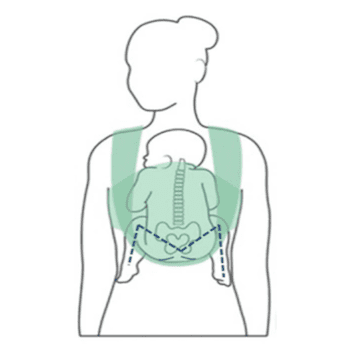
Kelleigh’s Quick Tip: The M-position (also called the spread-squat position) is how your baby’s legs and hips should naturally sit when in a baby carrier—especially during the early months (1-6 months).
Think of it like this: their knees should be higher than their bum, with legs forming a soft “M” shape.
Quick M-Position Checklist:
- Baby’s knees above their bum
- Hips spread wide
- Carrier supports thigh to thigh
- Spine curves in a soft “C”
- Baby’s face is visible and close enough to kiss
If your baby looks like they’re hanging straight down or their legs are dangling, you may need to adjust the carrier or try a different position.
This position also promotes easy breastfeeding with full head support for the baby. In ring slings and wraps, you can cover your baby’s head for privacy or avoid harsh sunlight!
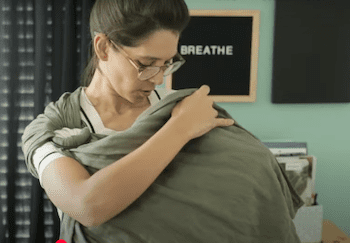
2. Front Facing Outwards:
Whether it is a park stroll or a grocery shopping, parents tend to go out more when their baby turns 6 months old.
At 6 to 12 months, a baby gets adequate head control, responds to us for communication, and loves to explore the surroundings. To fulfill these needs, the front-facing outward position serves the best!
The baby’s back is against your chest/front in this position. Baby’s face is outwards so it can see things in front, engage, and develop sensory responses! If you have a CURIOUS baby, he will love this position the most!
When my son Theo turned 6 months old, we used to go to parks on Sundays with all our kids. He used to be so happy and giggle while sitting in a front-outward position in his Baby Tula carrier. He used to observe his surroundings, get visual stimulations, and develop sensory growth.
- Best for baby’s motor coordination, cognitive development, and social interaction.
- It reduces strain on the caregiver’s back and shoulders.
- It may overstimulate the baby, especially when your baby is less than 6–8 months old.
- Checking your baby is harder than the inward position.
These carriers also support M-position for healthy hip and back growth. For babies above 6 months old, you can switch between the inward and outward position in front carriers to avoid strain on your back and shoulders.
3. Back Carry:
Your baby gains weight as it grows. Carrying it in the front position is feasible, but not that easy. Hence, many caregivers prefer to put the baby in the back position. This position is suitable for babies between 6 months and the toddler phase.
Imagine you are going on a hike with your baby or need to cover your house chores. How will you carry your little one in your hands all the time?
This is when the back carry position helps you! It keeps your hands free while keeping your baby safe on your back. This position offers a front view for your baby. And, it is also healthy for the baby’s hip and back development.
- It is suitable to carry your baby when you go out on hikes, walks, or shopping for long.
- It reduces strain on the caregiver’s back and shoulders.
- There is less face-to-face interaction with your baby.
Most parents use this baby carrier position as their baby starts to sit independently. I have seen many moms wrapping their babies below 6 months. There are chances of a baby’s suffocation and incorrect back, neck, and hip positioning.
In my opinion: Caregivers must seek advice from professional baby wearing consultants before using a wrap carrier or ring sling in a back carry position for babies between 1 and 6 months old.
Kelleigh beckett
4. Hip Carry:
Parenthood takes a twirly turn when your little one becomes 1 or 2 years old to enter the toddler phase!
If you know, you know! Taking care of toddlers is a handful of PATIENCE AND UNDERSTADING.
They need more play and outer time to develop their sensory and motor inputs. A single caregiver cannot hold a grown baby or toddler having more weight or active movements. That’s when a Hip Carry position of a baby carrier saves you!
Ideally, you opt for this position as soon as your baby starts to sit on its own (around 6–8 months old). Many convertible carriers in the market get detached from their main parts to convert into hip carriers.
So, if you have a curious baby or want to introduce surroundings to your baby, then the hip carry position is the best! It reduces strain on your back and shoulders. It balances the pressure on your lower body, especially in the lumbar area.
- It offers a wider view and more access to the surroundings for the baby.
- It promotes baby’s social, sensory, motor, and cognitive development.
- It is not advisable for long-time outings as it may create discomfort and strain on your stomach and lumbar area (especially for c-section moms)
Why Is Babywearing Important?
Babies need the utmost care to achieve healthy growth. Babywearing is more than a parenting tool for single caregivers!
It becomes more useful when you know the right carrying positions.
Using incorrect babywearing position for a longer time can cause:
- Asphyxiation
- Hip Dysplasia
- Non-round head shape
- Suffocation and strangulation
- Hip dislocation due to improper pressure on the developing hip sockets, etc.
Here are some factors that make baby wearing more important in your parenting journey:
1. The Sense of Security:
Babies, especially newborns, need to feel secure and safe like they do in their mother’s womb. Babywearing in a front-facing inward wrap, ring sling, and soft structured carrier helps to keep your baby close to your skin. It eventually keeps the baby less fussy and happy! It regulates the baby’s body temperature and stable heart rate.
2. Healthy Development:
Do you know that a proper M-leg sitting (Frog’s) mimics the position of the fetal state in the womb? It relieves excess pressure on the baby’s hip pockets when in a carrier. A pelvic tilt ensures your baby sits squarely/ in a squat position on its buttocks.
Along with torso development, the right baby carrier position helps in strong muscle and stimulatory growth in babies. Babies get good tummy time and easy burping in these positions. These positions also ease the breastfeeding process.
3. Reduces Postpartum Depression:
A happy mom leads to a happy baby, and vice versa! Keeping your baby closer to your skin releases oxytocin and serotonin. This eventually reduces stress in new moms and leads to a stable motherhood.
4. The T.I.C.K.S. Rule for Babywearing Safety
The UK Sling Consortium’s T.I.C.K.S is an acronym created for parents.
The Royal Society for the Prevention of Accidents (RoSPA) also mentions these guidelines to guide parents against slipping and falling accidents in babies.
T.I.C.K.S stands for:
T= Tight: the carriers should be tight enough to prevent your baby from slumping down from any loose fabric or slack.
I= In view at all times: Caregivers must be able to see the baby’s face when they glance down. The baby’s head must face upwards when you put it in a front laying position.
C= Close enough to kiss: You should be able to kiss your baby’s forehead/ head when you tip your head or chin forward.
K= Keep chin off the chest: There should be a space of a finger width under your baby’s chin. It shouldn’t be curled, and its chin shouldn’t be forced on its chest. This ensures safe breathing.
S= Supported Back: To ensure a safe and comfortable position without curling.
So, when it comes to your baby’s safety and preventing falling or insufficient breathing hazards, considering the right baby-wearing positions is a must!
How To Determine The Right Baby Carrier Position?
My six kids showed diverse cues when they were kept in their carriers. Of course, I shifted to ideal positions as they grew toward the toddler phase.
For example, Teagan loved the front-facing inward position because it was so snuggly, while Sawyer preferred the back carry position. I would switch between these babywearing positions to give my kids a chance to try different ones and find what felt most comfortable.
1. Age:
The key to choosing the right babywearing position is identifying your baby’s developmental milestones with its age.
By age, we can determine the carrier position as:
- Front inward-facing: Newborn and above
- Front outward-facing: from 4 to 6 months to 10–12 months
- Hip carry: from 4 to 6 months and above
- Back carry: from 6 months to toddler
2. Time:
I feel each baby takes a different time to settle into a carrier position. It depends on your baby’s developmental stage. Check for how much time your baby sits in a single position according to its comfort and cues.
FAQs Related to Baby Carrier Positions
What is the safe position for a baby carrier?
The front-facing inwards position is considered the safest for baby carriers. Your baby should be able to breathe properly, and its bum should be lower than the knees in the ‘M-leg’ position. Their neck, head, and hips should have proper support.
What is the age limit for baby carriers?
Normally, a child can sit in the baby carrier until it turns 4 or up to 45 lbs. Caregivers tend to use carriers in different positions from the newborn phase to the end of the toddler phase.
Which position is ideal to use when carrying a newborn/infant in a carrier?
Newborns should always be carried facing inward, in the M-position. Make sure their head is supported, their airways are clear, and their spine stays in a natural C-curve.
When Can My Baby Face Forward in a Carrier?
You can start using a forward-facing baby carrier once your baby is around 5 to 6 months old—but age isn’t the only factor. Your little one should meet a few key developmental milestones first:
1. Strong, steady head and neck control
2. Able to sit upright with little to no support
3. Shows interest in the world and enjoys looking around
Even if your baby is ready, forward-facing should be used only in short bursts—about 10 to 20 minutes at a time. If your baby seems fussy, overstimulated, or tired, it’s best to turn them back inward for comfort and support.
And remember:
Even in the forward-facing position, your baby’s legs should stay in the M-position—with their knees higher than their bottom and thighs supported from knee to knee. If their legs dangle straight down, it may be time to adjust the fit or try a different carrier.
What age should I stop using a baby carrier?
There’s no hard rule. Many carriers support toddlers up to 2–3 years, depending on weight and comfort. If your child still enjoys being carried—and you’re both comfortable—you can keep going!
How do I know if my baby is in the proper position?
Use the T.I.C.K.S. safety checklist: Tight, In view, Close enough to kiss, Keep chin off chest, and Supported back. And always check for that sweet M-position in their legs.
Final Takeaways on Baby Carrier Positions By Age
Learning to put your baby in the right position in a baby carrier may feel overwhelming for first-time moms. Trust me, I can feel your difficulties. That’s why, I have created this blog post to help you understand and make you aware of different babywearing positions.
From keeping your baby in the right posture to fulfilling its comfort, the above-given tips will help you in all aspects when your baby is at that age. I advise you to take guidance from an experienced babywearing consultant if you are unsure to try these positions for your little one.
Whether it is front-facing, hip carry, or back carry, reading and following the tips in this article will definitely solve your problem! And, if you face any issues while trying these baby carrier positions, feel free to mail me! I am always here to help you!
Until then, happy parenting.

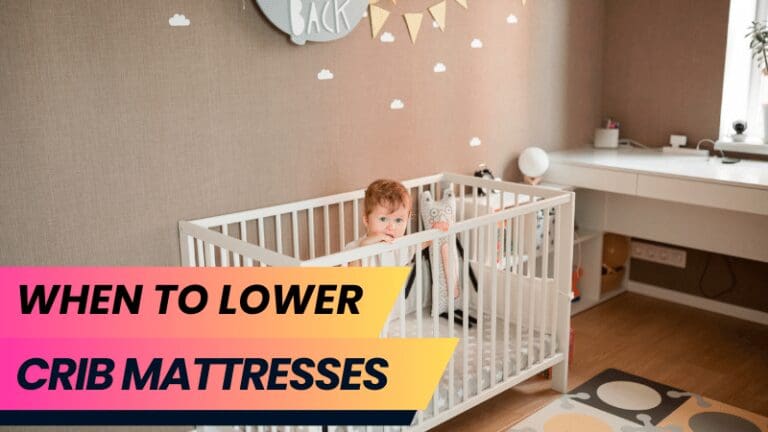
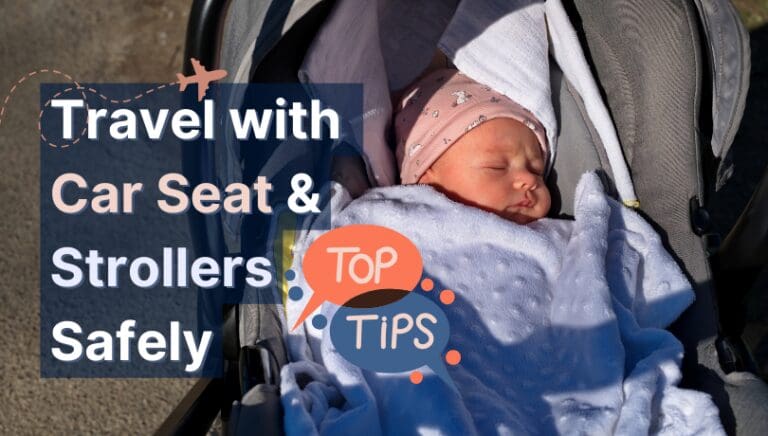

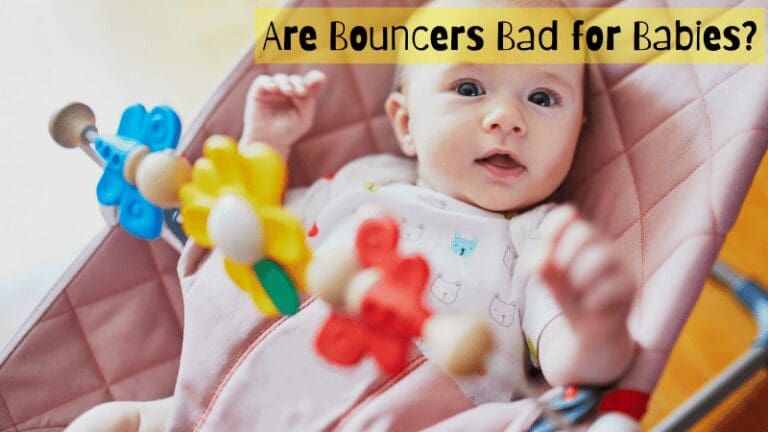
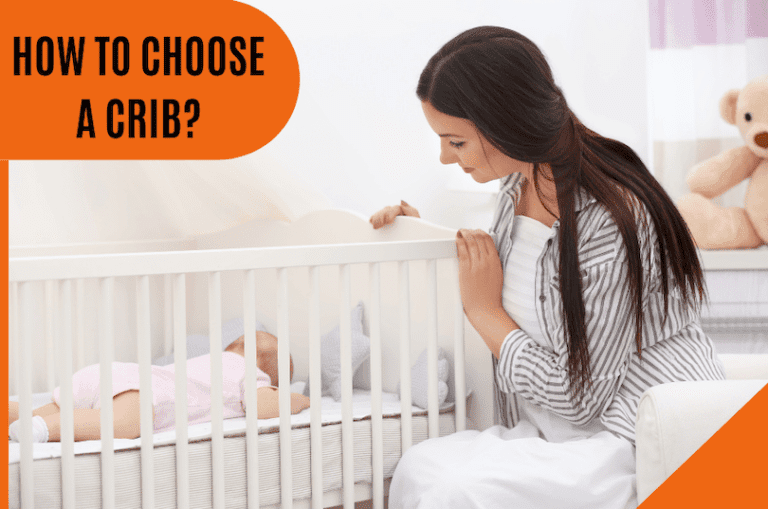
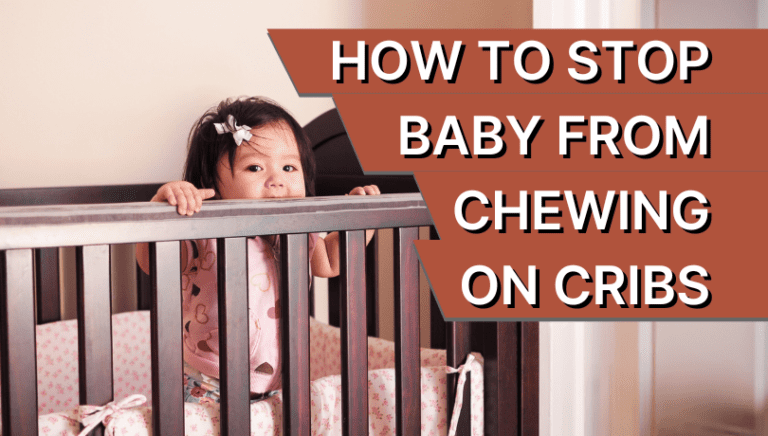
My 6-month-old loves facing out, but I was worried about how long is too long. Good to know short bursts are best!
That’s such a sweet age—they’re so curious about the world! I found short bursts worked well, especially in calmer environments. And inward-facing snuggles right after were always a win 😄
I’ve been so confused about when it’s safe for my baby to face forward in a carrier. This post made it so clear—thank you! I didn’t realize the M-position was that important.
Totally get it—I was confused too with my first baby! No one tells you how much positioning matters until you’re deep in it. Forward-facing can be fun when it’s done safely and the baby is ready.
This chart helped so much! I was wondering if I could still use a carrier for my 18-month-old. Back carry seems like the way to go.
Yes! I wore my kiddos well past 18 months—back carry made it so much easier on my shoulders (and gave them a great view too!). You’ve still got plenty of babywearing ahead. 😊